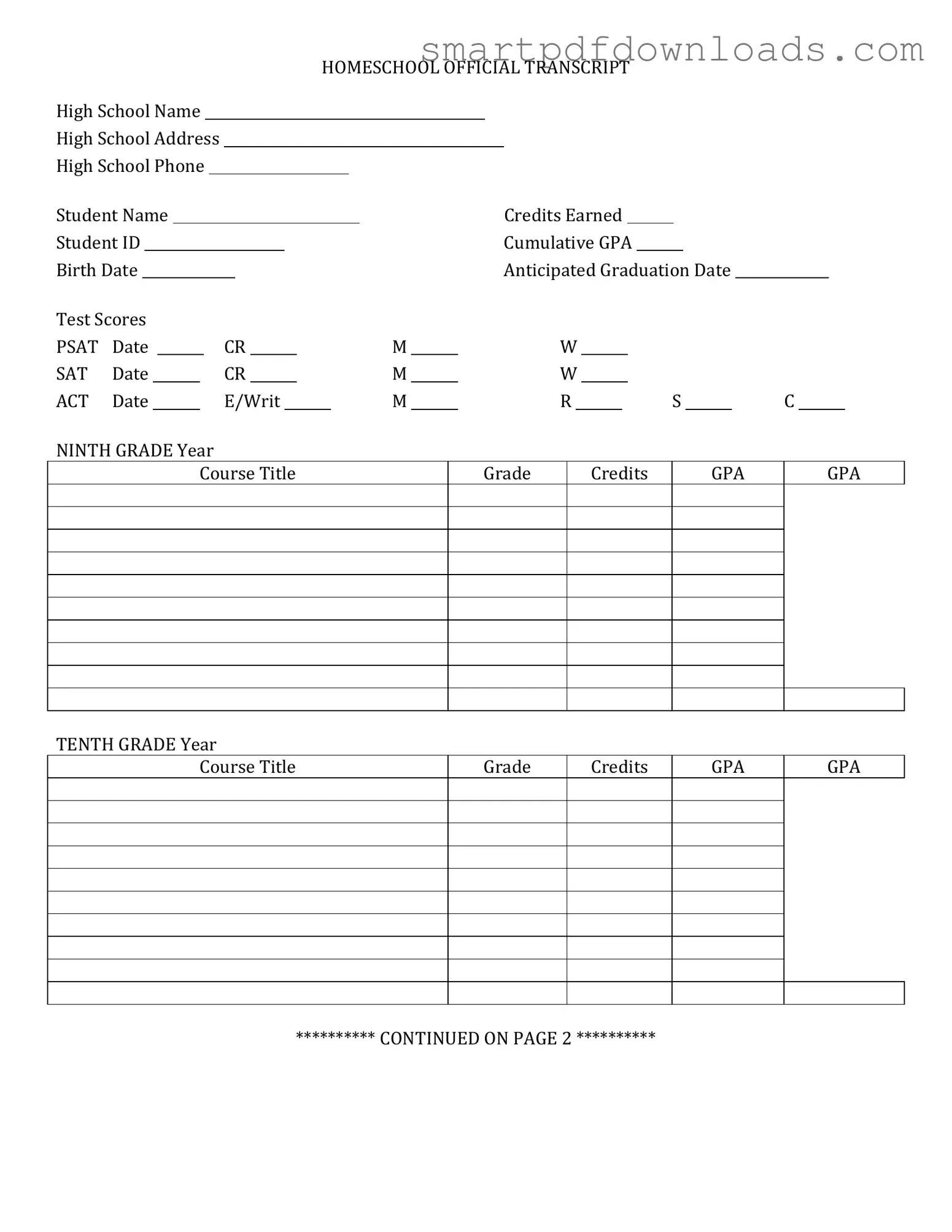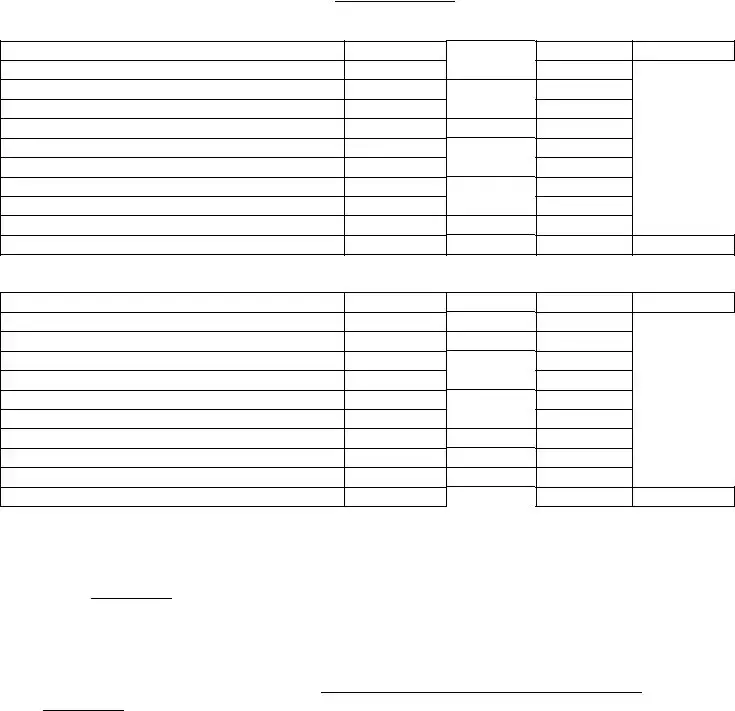Instructions on Utilizing High School Transcript
Filling out the High School Transcript form is an important step in your academic journey. Once completed, this form can be submitted to colleges or other institutions as part of your application process. It’s essential to provide accurate information to ensure that your academic record is correctly represented.
- Begin by writing your full name at the top of the form. Make sure to include any middle names or initials.
- Next, enter your date of birth. This helps to confirm your identity.
- Fill in your current address, including street, city, state, and ZIP code.
- Provide your contact information, including a phone number and email address where you can be reached.
- List the name of your high school, along with its address and the dates you attended.
- Include your grade point average (GPA) if applicable, and specify the scale used (e.g., 4.0 scale).
- Document any honors, awards, or recognitions you received during your high school years.
- Indicate the courses you completed, along with the grades earned for each course.
- Make sure to sign and date the form at the bottom. This confirms that all information provided is accurate.
After completing the form, review it for any errors or missing information. Once everything looks correct, you can submit it according to the instructions provided by the institution requesting the transcript.


